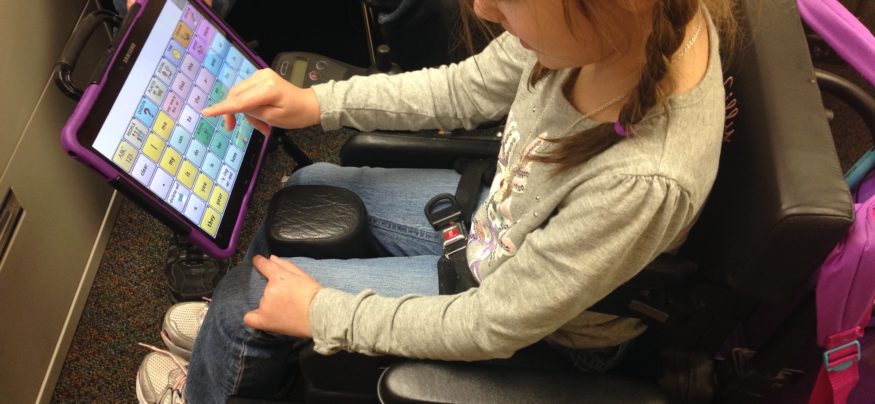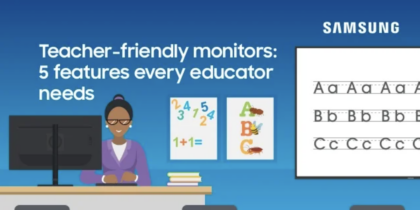Technology, especially in one-to-one classrooms, can be a critical tool in educating students with special needs. Through built-in tools that help teachers adjust learning to meet students’ individual education plans, special education technology has the power to provide the optimum support that students with special needs require to participate and learn along with their mainstream peers.
Create Multiple Modalities for Lessons
Not all students learn the same way, and today’s classrooms are comprised of students with varying learning styles and abilities. It makes sense, therefore, that providing a wide range of learning materials is key to engaging all students, while providing them with the tools they need to learn. This type of differentiated instruction is especially important within the special education setting, in which students who have special needs may not be able to consume the traditional paper-based lessons still used in many classrooms.
Modern electronic devices and special software allow consumption and creation of content through multiple modalities, not just written text. For example, a student with dyslexia might benefit from using software that reads words aloud when selected. This technology makes it easier to provide the audiovisual experiences some students require to be able to grasp the concepts presented. The technology also allows instructors to incorporate multimedia elements into assessments, allowing all students to create the type of project that showcases their talents and learning. In addition, special needs students who are nonverbal can make use of the devices’ text-to-speech capabilities to present their learning to the class, so that they share their work as would students who do not have verbal deficits.
Take Advantage of Adaptive Modes
Many tablets come with features that allow students with special needs to personalize their use. For example, a student with a mild to moderate visual impairment may be best served by double-tapping or dragging their fingers to magnify text and photos, or a student with a more severe visual impairment can have text read aloud. Students with hearing deficits can use captioning to experience audiovisual materials.
These capabilities ensure that students with special needs don’t need a special curriculum. They can consume—and learn—the same materials as their peers, which helps to prepare them for the same assessments. Additionally, being on the same timeline and curriculum as their peers can help to ensure that students with special needs develop positive self-esteem and the skills they need to succeed upon graduation.
Using Specialized Technology to Make a Difference
Some students with special needs will likely require devices and software that provide more robust support. Lilly, a third-grade student with cerebral palsy, was able to show just how smart she is through the use of a Samsung Galaxy Tablet and personalized digital curriculum. When Lilly joined her class, she was completely nonverbal. “In one of our introductory meetings with Lilly, my colleague Rachael sat next to her with an augmentative communication system on a tablet, demonstrating to the family how we might be able to support Lilly’s communication,” said Robin Pegg, assistive technology consultant at Eaton Regional Education Service Agency. “Lilly was craning her neck, trying to see what Rachael was doing. Rachael then handed Lilly the device, and in that first meeting, Lilly created sentences. Nobody knew she could do that.”
Because of this technology, Pegg explains, Lilly is able to go to class with all the other third-graders, and her parents and teachers have seen that she is likely of above-average intelligence. Without this type of special education technology, Lilly’s gifts may have gone uncovered. According to Pegg, “It has completely changed her life.”







